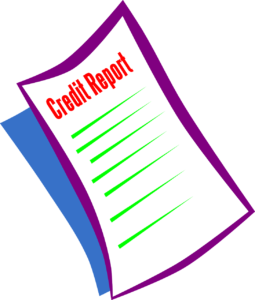Good credit scores can drop to dangerous levels rather quickly. With only a handful of missed or late payments, one’s score can fall below 600, which severely limits a person’s financial opportunities. People with a score this low may not qualify for the apartment of their dreams and could even pay more for insurance. Interest rates will also be significantly higher for these individuals. Because many employers check credit scores as part of the hiring process, people could even miss out on landing a great job.
Many individuals feel that all is lost once their score falls to this level, which results in a downward circle of despair. Luckily, however, people can increase their scores quicker than they think. The trick to reclaiming a great credit score is to create and follow a plan. Below are a handful of the first steps to take to reestablish good credit, or even establish it for the first time.
-
Obtain a copy of your credit report.
 This first step in getting a better score is actually looking at the report. AnnualCreditReport.com is a free and trustworthy way of getting a reliable copy of a credit report from the three reporting agencies. Most people have errors in their report, so this is the time to look through it and correct any mistakes or discrepancies. According to research, 79 percent of credit reports contain some sort of incorrect information, so this step is critical. Individuals can send credit agencies certified letters documenting the mistakes to get them altered.
This first step in getting a better score is actually looking at the report. AnnualCreditReport.com is a free and trustworthy way of getting a reliable copy of a credit report from the three reporting agencies. Most people have errors in their report, so this is the time to look through it and correct any mistakes or discrepancies. According to research, 79 percent of credit reports contain some sort of incorrect information, so this step is critical. Individuals can send credit agencies certified letters documenting the mistakes to get them altered.
A credit report also lets people know what they are up against. They may have old accounts, such as a utilities bill from an apartment rented a decade ago, that they have forgotten or do not know about. Closing these accounts can give a quick boost to one’s credit rating.
-
Focus on getting all accounts current.
People can beat themselves up when they have missed payments and start to think that their credit score will never recover. This train of thought is simply not true. Individuals should try to get all of their accounts current as quickly as possible and then keep them current. Six months of on-time payment will result in a noticeable increase in the score, which will only continue to climb with a continued history of on-time payments. The weight given to missed payments decreases over time, so the black mark will eventually disappear completely provided that individuals stay current with their accounts.
-
Use automatic bill payment systems.
A single overdue payment, even if it is only a few days late, can have a major impact on someone’s credit score. While a single late payment will not have a lasting effect, a pattern of lateness will result in a dismal score. The only way to reverse this history is to begin making payments on time on a consistent basis. If techniques like marking a calendar do not work, the easiest solution is to take the human component out of it and simply sign up for automatic payments on all accounts. With a year of on-time payments, most people will see a bump in their score. Another year of no late payments results in a much larger score increase.
-
Open needed accounts within reason.
 To rebuild credit, individuals need to have a bank account that they can use as a centralized way of storing money and making payments to their various credit accounts. People with bad credit may actually face some barriers to opening a bank account, but several banks provide so-called “opportunity” accounts to help people rebuild credit. These types of accounts typically come with high fees and very limited services, but individuals need to remember that it is a temporary measure. Local banks and credit unions will often work with people who are trying to rebuild their credit.
To rebuild credit, individuals need to have a bank account that they can use as a centralized way of storing money and making payments to their various credit accounts. People with bad credit may actually face some barriers to opening a bank account, but several banks provide so-called “opportunity” accounts to help people rebuild credit. These types of accounts typically come with high fees and very limited services, but individuals need to remember that it is a temporary measure. Local banks and credit unions will often work with people who are trying to rebuild their credit.
Individuals should also look into getting a secured credit card if they do not currently have a credit account. A bank account serves as collateral for the secured credit card, and people can charge up to the amount in their account. These cards should have low or no annual fees and no application fee. Some cards will convert to an unsecured account after a year of on-time payments. Again, this measure is temporary, and the goal is to get an unsecured account.
While these accounts are necessary to rebuild credit, individuals should avoid opening unneeded accounts. Opening a bunch of new lines of credit is a red flag for credit agencies, and one’s score will suffer as a result.
-
Shop for loans quickly.
When rebuilding credit, sometimes it becomes necessary to seek out a loan. Each loan application means a credit check. Too many of these inquiries can hurt a score because credit bureaus see them as trying to take out loans from many different sources at once.
However, shopping for a loan will naturally result in several credit inquiries. The scoring system looks at the length of time between requests, and a series of requests grouped together will be considered loan shopping and won’t significantly ding one’s credit score. Ideally, borrowers should complete all loan shopping in 30 days or less. Inquiries spaced farther apart than this will drag a credit score down.

